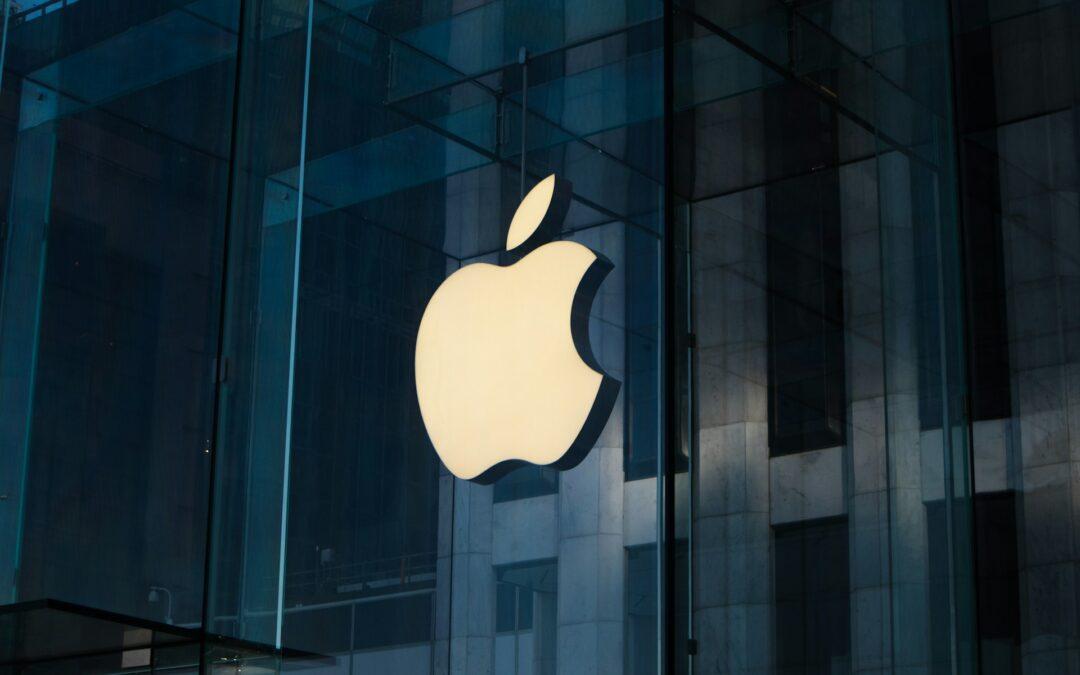In this article, we delve into 30 actionable examples showcasing the power of a proactive mindset, illustrating how this approach significantly impacts work, business endeavors, and overall life achievements.
Being proactive isn’t just a buzzword – it’s a transformative mindset that propels individuals toward their goals. Throughout this piece, we’ll explore a myriad of real-world instances where proactive thinking and action have made an undeniable difference. From proactive problem-solving strategies to proactive communication techniques, each example is meticulously curated to highlight its relevance in fostering success. Understanding and implementing these approaches not only enhance productivity in the workplace but also pave the way for resilience, adaptability, and substantial progress in various facets of life. Join us on this journey as we uncover the essence of proactive approaches and why mastering this mindset is fundamental in navigating the complexities of modern work dynamics and personal aspirations.
The Best Proactive Approach Examples
1. Setting Goals
Setting clear, achievable objectives is the cornerstone of progress. By defining these goals and crafting actionable plans to attain them, individuals and organizations steer their energies toward specific outcomes. This proactive approach provides direction, motivation, and a roadmap for success. It not only sharpens focus but also fosters a sense of purpose, enabling better decision-making and resource allocation.
2. Innovation and Creativity
Encouraging a culture of innovation and creativity sparks progress. Embracing new ideas and unconventional thinking cultivates an environment ripe for growth and evolution. By constantly seeking ways to improve products, services, or processes, individuals and companies can stay ahead in competitive landscapes, driving meaningful change and differentiation.
3. Continuous Learning
The commitment to ongoing learning and skill development is a proactive strategy that fuels personal and professional growth. Embracing new knowledge, trends, and advancements in your field ensures relevance and adaptability. It’s about staying curious, exploring new horizons, and being open to evolving perspectives, ultimately enhancing expertise and staying at the forefront of your industry.
4. Risk Assessment
Identifying and mitigating potential risks before they escalate is a proactive measure that safeguards against unforeseen challenges. By conducting thorough risk assessments, individuals and organizations can develop strategies to anticipate, minimize, or even eliminate these risks. This approach fortifies resilience and bolsters preparedness in navigating uncertain terrain.
5. Streamlining Processes
Regularly evaluating and optimizing workflows is a proactive endeavor that drives efficiency. By continuously refining operational processes, businesses can eliminate redundancies, reduce wastage, and enhance productivity. It’s about fostering a culture of efficiency and agility, ensuring that resources are utilized optimally to achieve desired outcomes.
6. Building Relationships
Initiating and nurturing meaningful connections is a proactive approach that forms the bedrock of collaboration and support. By actively cultivating relationships with colleagues, clients, and mentors, individuals foster a network that not only offers guidance but also opens doors to opportunities, collaboration, and mutual growth.
7. Crisis Planning
Developing contingency plans and protocols for unforeseen situations is a proactive strategy that minimizes the impact of crises. By anticipating potential emergencies and having well-thought-out plans in place, individuals and organizations can respond swiftly and effectively, mitigating damage and ensuring a smoother recovery process.
8. Financial Planning
Prudent financial planning involves budgeting, saving, and investing wisely to secure future stability. By taking a proactive stance towards managing finances, individuals can build a robust financial foundation, mitigate risks, and work towards achieving long-term financial goals.
9. Succession Planning
Identifying and nurturing future leaders within an organization is a proactive measure that ensures continuity and growth. By grooming talent and preparing individuals for leadership roles, businesses safeguard against leadership vacuums and enable a seamless transition, fostering sustainability and organizational resilience.
10. Conflict Resolution
Addressing conflicts proactively is essential for maintaining healthy relationships, both personally and professionally. By confronting issues early and seeking resolutions that satisfy all parties involved, individuals can prevent escalation, foster understanding, and maintain a conducive environment for collaboration and growth.
11. Team Empowerment
Empowering team members by fostering an environment of trust and autonomy is a proactive approach that cultivates a sense of ownership and responsibility. Encouraging individuals to make decisions independently not only boosts their confidence but also enhances productivity and creativity within the team. This approach fosters a culture where each member feels valued, leading to increased engagement and innovative problem-solving.
12. Technology Adoption
Staying abreast of technological advancements and integrating relevant tools into workflows is a proactive strategy that drives efficiency and competitiveness. Embracing new technologies helps streamline processes, reduces manual effort, and often opens avenues for innovative solutions. It’s about embracing change to optimize operations and deliver enhanced value to customers or clients.
13. Networking
Active participation in industry events and conferences is a proactive way to expand professional networks and stay updated with industry trends. Networking facilitates knowledge exchange, collaboration, and the discovery of new opportunities. It’s a strategic investment in personal and professional growth, often leading to valuable partnerships and insights.
14. Market Research
Conducting comprehensive market research is a proactive approach that offers invaluable insights into consumer behavior, market trends, and competitors. It enables informed decision-making, product/service improvements, and the identification of emerging opportunities. By staying attuned to market dynamics, individuals and businesses can adapt their strategies to meet evolving demands.
15. Adaptability
Being adaptable and open to change is a proactive mindset that enables individuals to navigate shifting landscapes and challenges effectively. Embracing change proactively rather than reactively allows for quicker adjustments and fosters resilience. It’s about staying agile, responsive, and ready to pivot when necessary to thrive in dynamic environments.
16. Delegation
Recognizing when tasks can be delegated and empowering others to take on responsibilities is a proactive approach to optimize productivity and foster growth. Delegation not only relieves workload but also nurtures talent within a team, enhancing skill development and promoting a culture of trust and collaboration.
17. Mentorship and Coaching
Engaging in mentorship and offering guidance to others in your field is a proactive way to contribute to personal and collective growth. Seeking advice from experienced individuals and sharing insights not only facilitates learning but also builds a supportive community. Mentorship fosters continuous improvement, knowledge exchange, and professional development.
18. Conflict Anticipation
Anticipating potential conflicts and taking preventive actions is a proactive strategy to minimize disruptions and maintain healthy relationships. By identifying and addressing underlying issues early on, individuals can prevent conflicts from escalating and find mutually beneficial solutions, fostering a harmonious environment.
19. Experience Sharing
Sharing expertise and insights with colleagues or within a community is a proactive approach that catalyzes collective learning and growth. By contributing knowledge, individuals not only aid in the development of others but also create opportunities for collaboration and innovation. It’s about fostering a culture of continuous learning and mutual support.
20. Product Development
Anticipating customer needs and preferences is a proactive approach that drives innovation in product or service development. By staying attuned to market demands and trends, individuals can create offerings that address unmet needs, leading to enhanced customer satisfaction and competitive advantage.
21. Future Planning
Anticipating future trends and formulating strategies to stay competitive in the long term is a proactive approach essential for sustained success. It involves analyzing market shifts, technological advancements, and changing consumer behaviors to forecast potential opportunities and challenges. By proactively planning, individuals and organizations can adapt, innovate, and position themselves advantageously in evolving landscapes.
22. Diversification
Expanding services, products, or investments to diversify and mitigate risks is a proactive strategy for long-term sustainability. Diversification spreads risk across different areas, reducing vulnerability to market fluctuations or unforeseen events. It’s about creating a robust portfolio that can weather uncertainties and capitalize on multiple avenues for growth.
23. Regulatory Compliance
Staying abreast of regulations and ensuring compliance within your industry is a proactive measure that maintains trust and credibility. Proactively monitoring and adhering to legal requirements not only mitigates legal risks but also demonstrates commitment to ethical business practices, fostering trust among stakeholders.
24. Community Engagement
Engaging in volunteer work or initiating community projects is a proactive way to give back and create positive change. Beyond corporate social responsibility, community engagement fosters goodwill, builds meaningful connections, and contributes to a supportive environment for both businesses and society.
25. Reputation Management
Monitoring and managing your company’s online presence and reputation is a proactive effort to safeguard brand image. Proactively addressing issues, amplifying positive narratives, and swiftly responding to feedback or criticisms contribute to maintaining a positive reputation, which is invaluable in today’s interconnected digital world.
26. Knowledge Management
Implementing systems to capture, organize, and share institutional knowledge within an organization is a proactive approach that facilitates efficiency and innovation. Proactive knowledge management ensures that valuable insights and expertise are preserved and easily accessible, fostering continuous improvement and informed decision-making.
27. Crisis Communication
Developing a communication strategy for addressing stakeholders during challenging times is a proactive measure that minimizes reputational damage. Planning and practicing crisis communication in advance enables swift and effective responses, preserving trust and transparency amid adversity.
28. Cybersecurity Measures
Implementing proactive measures to safeguard sensitive data and systems from potential cyber threats is crucial in the digital age. Proactive cybersecurity measures, such as regular audits, employee training, and robust security protocols, help preemptively identify and mitigate vulnerabilities, safeguarding against potential breaches or data compromises.
29. Talent Acquisition Strategy
Proactively scouting for top talent and nurturing relationships with potential hires before vacancies arise is a strategic approach to maintaining a competitive edge. Building a talent pipeline ensures access to skilled professionals and reduces the time-to-hire, enabling businesses to adapt swiftly to staffing needs and maintain operational continuity.
30. Performance Reviews and Feedback
Regularly providing constructive feedback and conducting performance reviews is a proactive approach that fosters individual growth and organizational improvement. It encourages continuous learning, identifies areas for development, and aligns individual goals with organizational objectives, ultimately enhancing overall performance and productivity.
What is Proactive Approach?
A proactive approach involves anticipating future needs, issues, or opportunities and taking preemptive action to address them before they arise. It’s a strategic mindset focused on foresight and planning to mitigate potential problems or leverage forthcoming possibilities. This proactive strategy fosters preparedness and allows for more control over outcomes. By being proactive, individuals or organizations can stay ahead, minimize risks, and capitalize on advantageous situations.
In various contexts, be it personal, professional, or organizational, a proactive approach embodies a forward-thinking attitude. It involves actively seeking solutions, devising plans, and implementing measures to shape a favorable future. This proactive stance isn’t reactive; rather, it’s about taking initiative, identifying trends, and forecasting circumstances to act proactively.
In business, for instance, a proactive approach might involve market research to anticipate shifts in consumer behavior or technological advancements. This allows companies to adapt strategies in advance, staying competitive and responsive. On an individual level, adopting a proactive mindset means cultivating habits like time management, setting goals, and continuously learning to stay prepared for challenges or opportunities.
Overall, being proactive isn’t just about responding to situations as they unfold; it’s about taking charge, being innovative, and steering toward desired outcomes through foresight and preemptive action.
Proactive behavior encompasses a proactive mindset, where individuals or entities actively shape their circumstances rather than merely reacting to them. It involves a proactive mindset, proactive planning, and proactive implementation. This proactive stance fosters a sense of empowerment and control, enabling the creation of favorable conditions rather than being at the mercy of unforeseen events.
In essence, a proactive approach is about embracing a proactive lifestyle, where one anticipates potential challenges and opportunities, prepares for them, and takes deliberate steps to influence outcomes positively. It’s a proactive strategy that emphasizes preparation, prevention, and strategic action over reactive, last-minute responses.
By proactively identifying potential hurdles and devising preemptive solutions, individuals or organizations can navigate uncertain terrain more effectively. This approach minimizes risks, optimizes resources, and maximizes opportunities for success, making it a crucial aspect of personal development and strategic planning across various domains.
The Importance of Being Proactive in Business
In the dynamic realm of business, success often hinges not just on reacting to current situations but on anticipating and seizing future opportunities. The essence of this lies in being proactive. To be proactive in business is to adopt a forward-thinking mindset, to anticipate potential challenges, and to take preemptive measures to navigate them.
At its core, this approach transcends mere reaction; it involves a deliberate and strategic stance toward challenges and opportunities alike. Instead of waiting for circumstances to dictate actions, proactive individuals and enterprises anticipate shifts in market dynamics, consumer preferences, and technological advancements. This foresight empowers them to adapt swiftly, positioning themselves ahead of the curve.
Proactivity is not merely about risk aversion; it’s about calculated risk-taking. It’s the ethos driving innovation, fostering an environment where creativity thrives and novel ideas materialize. By actively seeking out new pathways and unexplored possibilities, businesses can capitalize on emerging trends, gaining a competitive edge in an ever-evolving landscape.
Moreover, being proactive cultivates resilience. By acknowledging potential pitfalls early on, businesses can implement strategies to mitigate risks and bounce back from setbacks more effectively. This resilience becomes a cornerstone for longevity and growth in an unpredictable market.
Crucially, the importance of proactivity extends beyond the confines of individual enterprises. It ripples through entire industries, fostering an ecosystem of innovation and progress. When businesses collectively embrace proactive strategies, they stimulate economic development, fostering an environment ripe for advancement and evolution.
In essence, the significance of being proactive in business lies not just in reacting to the present, but in shaping the future. It’s about wielding foresight as a tool, leveraging it to craft a path toward success, innovation, and enduring resilience. In a landscape where change is constant, being proactive isn’t just an advantage—it’s a necessity for those aiming not only to survive but to thrive.
Key Proactive Methods
Proactive methods refer to strategies or actions taken in anticipation of or to prevent potential issues or problems from arising. These methods involve being forward-thinking and taking initiative to address situations before they become problematic. In various contexts, being proactive could involve:
Preventive Measures
Preventive measures involve taking actions to avoid potential issues or problems. This approach is akin to a preemptive strike against issues that might arise. For example, in a manufacturing setting, regular equipment maintenance is a classic preventive measure. This involves scheduling regular inspections, lubrication, and replacing parts before they fail, thereby preventing unexpected breakdowns. The goal is to keep systems functioning optimally, reducing downtime, costs, and potential risks associated with failures.
Planning Ahead
Planning ahead is about foresight and preparedness. It involves anticipating challenges, analyzing potential risks, and creating strategies to mitigate those risks in advance. In a project management context, this could mean identifying possible obstacles early on, developing contingency plans, and allocating resources accordingly. By planning ahead, organizations can adapt quickly when challenges arise, minimizing disruptions and ensuring smoother operations.
Initiative and Innovation
Initiative and innovation encompass a proactive mindset focused on continuous improvement. Instead of waiting for issues to surface, individuals or organizations actively seek new solutions, improvements, or advancements. It involves taking the lead in exploring better ways of doing things, whether through process optimization, introducing new technologies, or creating novel products or services. By fostering a culture of innovation and encouraging proactive thinking, businesses can stay ahead of the curve and maintain a competitive edge.
Early Intervention
Early intervention revolves around promptly addressing emerging problems at their nascent stage to prevent them from escalating into more significant issues. This approach emphasizes the importance of keen observation and quick action. For instance, in healthcare, early intervention might involve regular health check-ups to detect potential health issues before they become serious. Similarly, in business, identifying and resolving small operational inefficiencies early on can prevent larger disruptions later.
Continuous Improvement
Continuous improvement is an ongoing, proactive approach aimed at consistently enhancing processes, products, or services. It involves regular evaluation, analysis, and refinement of existing systems to make incremental enhancements. By fostering a culture of continuous improvement, organizations encourage employees at all levels to suggest and implement improvements, resulting in a steady evolution towards greater efficiency, quality, and customer satisfaction.
Each of these proactive methods contributes to a holistic approach in preventing, mitigating, and addressing challenges, thereby fostering stability, efficiency, and growth within various domains.
In essence, being proactive involves a mindset focused on foreseeing potential challenges and taking action to avoid or minimize their impact.
Etymology of the Term
The term “proactive” has emerged as a cornerstone of modern productivity and self-improvement discourse, advocating a forward-thinking, action-oriented approach to life. Its etymology, rooted in linguistic evolution, unveils a narrative that resonates deeply with its contemporary usage.
“Proactive” is a fusion of “pro-” meaning “forward” or “in favor of” and “active,” signifying engagement or action. Its inception can be traced back to the mid-20th century, notably popularized by Stephen R. Covey in his seminal work, “The 7 Habits of Highly Effective People.” Covey’s advocacy for proactive behavior as a catalyst for personal effectiveness thrust the term into the limelight.
However, the word’s linguistic ancestry precedes its modern prominence. The prefix “pro-” derives from the Latin “pro,” translating to “for” or “before,” emphasizing a sense of priority or anticipation. Meanwhile, “active,” stemming from the Latin “activus,” embodies energy and movement.
The amalgamation of these roots in “proactive” encapsulates a profound concept: taking initiative and responsibility for one’s actions before circumstances dictate a reaction. It embodies a proactive mindset, where individuals anticipate challenges, seize opportunities, and steer their destinies.
In the realm of personal development and management philosophies, the term has transcended linguistic boundaries to become a beacon for proactive thinking and behavioral change. It underscores the agency individuals possess in shaping their lives, encouraging a mindset that transcends mere reaction to external stimuli.
Today, “proactive” extends beyond its linguistic origins to permeate various domains, from business strategies to mental health practices. It embodies a proactive stance towards problem-solving, decision-making, and overall life approach, championing the idea that foresight and initiative are potent tools for success and fulfillment.
The etymology of “proactive” illuminates a compelling narrative—an evolution from linguistic components to a powerful concept that advocates seizing the reins of life. Its journey from roots in Latin to contemporary usage exemplifies the enduring appeal of taking charge of one’s destiny, resonating with those seeking empowerment and efficacy in navigating an ever-evolving world.
Benefits of Being Proactive
The benefits of a proactive approach include increased efficiency, better problem anticipation, timely resolution, and enhanced preparedness. By taking proactive measures, businesses or individuals can prevent issues before they escalate, resulting in cost savings, improved productivity, and a competitive edge. Being proactive fosters a forward-thinking mindset, enabling swift adaptation to changes and minimizing potential risks.
Moreover, a proactive approach cultivates a culture of innovation and continuous improvement. By actively seeking opportunities for growth and development, individuals and organizations can stay ahead in their respective fields. This mindset encourages proactive problem-solving, enabling them to seize opportunities and navigate challenges effectively.
Additionally, being proactive fosters stronger relationships, both professionally and personally. Proactively addressing concerns or needs demonstrates reliability and foresight, leading to increased trust and collaboration among team members, clients, and partners.
Furthermore, the proactive approach extends beyond immediate benefits, laying the foundation for long-term success. It establishes a framework for strategic planning, enabling better resource allocation and informed decision-making. Ultimately, embracing a proactive mindset empowers individuals and organizations to shape their futures rather than merely reacting to circumstances.
Recommended Articles

TOP 40 Fire-Related Business Ideas to Start in 2024
When we think about fire, it's often about its dangers or the essential role it plays in our daily lives, from cooking to keeping us warm. Yet,...

Is Apple About to Face Tough Times?
Apple, a paragon of innovation and a titan in the tech industry, stands at a critical crossroad. The fiscal year of 2023 unveiled a stark reality:...

Top 30 Business Ideas Near Highway & Guide
If you're considering starting a business near a highway and are on the hunt for the most profitable ventures, you've come to the right place....

TOP 25 Catering Business Ideas for 2024
If you're looking to start a business in the food industry, exploring catering business ideas for 2024 might be the perfect path for you. The catering world offers a wide range of opportunities, from small, intimate gatherings to large-scale events, allowing for...

30 Types of Clothing Stores – Shop Definitions & Examples
In this article, we have compiled a list of the 30 most common types of clothing stores. At first glance, it might seem that a clothing store is simply a place where clothes are sold, suggesting that there wouldn't be many variations among them. However, the reality...
Most Read
TOP 20 Best Bakery Types to Open in 2024
In 2024, the bakery industry is set to evolve, blending traditional flavors with innovative concepts to meet the ever-changing tastes of consumers. As we navigate through this delicious transformation, aspiring entrepreneurs are presented with an array of bakery...

TOP 50 Easy Food to Sell – Most Profitable Ideas
In this article, we've curated a list of the top 50 easy food ideas for sale, ideal for concession stands, restaurants, bars, small home businesses, and various other venues. These foods are simple to prepare, and their sale isn't overly challenging. Undoubtedly, all...
Top 20 Things You Should Teach Your Child About Money
Understanding money is a crucial skill often overlooked in formal education. As parents, it's our responsibility to fill this gap and equip our children with essential financial knowledge. To assist you, we've compiled 20 key lessons to teach your child about money,...
The Best Food Stall Ideas for School Fairs – 40 Ideas
We've got a mix of hot and cold foods on our list. Some of the hot stuff will taste extra yummy if you can warm them up using a microwave. And for some drinks, having a kettle or coffee maker handy will be super helpful. We've got a mix of hot and cold foods on our...
